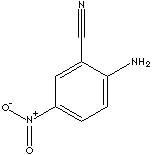PRODUCT IDENTIFICATION

CLASSIFICATION
AROMATIC AMINES / NITRO COMPOUNDS / DYES /
PHYSICAL AND CHEMICAL PROPERTIES
AUTOIGNITION
NFPA RATINGS
REFRACTIVE INDEX
APPLICATIONS
- Michael addition
- Reduction
- Henry Reaction (Nitro-aldol reaction)
- Nef reaction
- O-Alkylation
- Cycloaddition
- Substitution, Elimination, Conversion reaction
- Alkylation, Acylation, and Halogenation
One of the most important aromatic amines is aniline; pale brown liquid boiling at 184 C, melting at -6 C. Aniline is obtained commercially from chlorobenzene by heating with ammonia in the presence of copper catalyst or from a product of coal tar (nitrobenzene) through the reduction reaction. Aniline is the starting material in the dye manufacturing industry and as in the manufacture of others. Aniline is converted into sulfanilic acid which is the parent compound of the sulfa drugs. Aniline is also important in the manufacture of rubber-processing chemicals, antioxidants and varnishes. Nitroaniline is used in the synthesis of dyes, agrochemicals, pharmaceuticals, rubber and plastic additives, photographic antifogging agents and coccidiostats.
Nitrile is an organic compounds containing cyano group (-C��N, containing trivalent nitrogen) which is attached to one carbon atom with the general formula RC��N. Their names are corresponding to carboxylic acids by changing '-ic acid' to '-onitrile', or '-nitrile', whichever preserves a single letter O. Examples are acetonitrile from acetic acid and benzonitrile from benzoic acid. The prefix cyano is used as an alternative naming system to indicate the presence of a nitrile group in a molecule. Sodium cyanide, NaCN; potassium cyanide, KCN; calcium cyanide, Ca(CN)2; and hydrocyanic (or prussic) acid, HCN are examples. Chemically, the simple inorganic cyanides resemble chlorides in many ways. Organic nitriles are used as; ·
Extraction solvent for fatty acids, oils and unsaturated hydrocarbons
·
Solvent for spinning and casting and extractive distillation based on its
selective miscibility with organic compounds.
· Removing agent of
colouring matters and aromatic alcohols
· Non-aqueous solvent for
titrations and for inorganic salts
· Recrystallization of steroids
·
Parent compound for organic synthesis including ketones and amines
·
Solvent or chemical intermediate in biochemistry (protein sequencing and DNA synthesis)
· High-pressure liquid chromatographic analysis
·
Catalyst and component of transition-metal complex catalysts
· Stabilizer
for chlorinated solvents
· Chemical intermediate and solvent for perfumes
and pharmaceuticals
Benzonitrile, derived mainly from benzoic acid reaction with lead thiocyanate by heating, is a clear liquid; boils at 191 C. It reacts violently with strong acids to produce toxic hydrogen cyanide. It decomposes on heating producing very toxic fumes, hydrogen cyanide, nitrous oxides. Benzonitrile is used as a solvent and chemical intermediate for the synthesis of pharmaceuticals, dyestuffs and rubber chemicals through the reactions of alkylation, condensation, esterification, hydrolysis, halogenation or nitration. Benzonitrile and its derivatives are used in the manufacture of lacquers, polymers and anhydrous metallic salts as well as intermediates for pharmaceuticals, agrochemicals, and other organic chemicals.
APPEARANCE